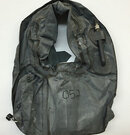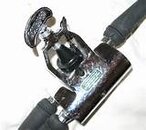I was recently reading about the evolution of regulators and it mentioned using a single hose regulator without an SPG. I can't recall seeing that in my limited sphere of visibility so I thought I would see if this was common in other areas.
As I recall, the progression usually went from a double hose, to a single hose with an SPG, and later came the Octopus and inflator hoses. How does that square with what you remember?
As I recall, the progression usually went from a double hose, to a single hose with an SPG, and later came the Octopus and inflator hoses. How does that square with what you remember?






